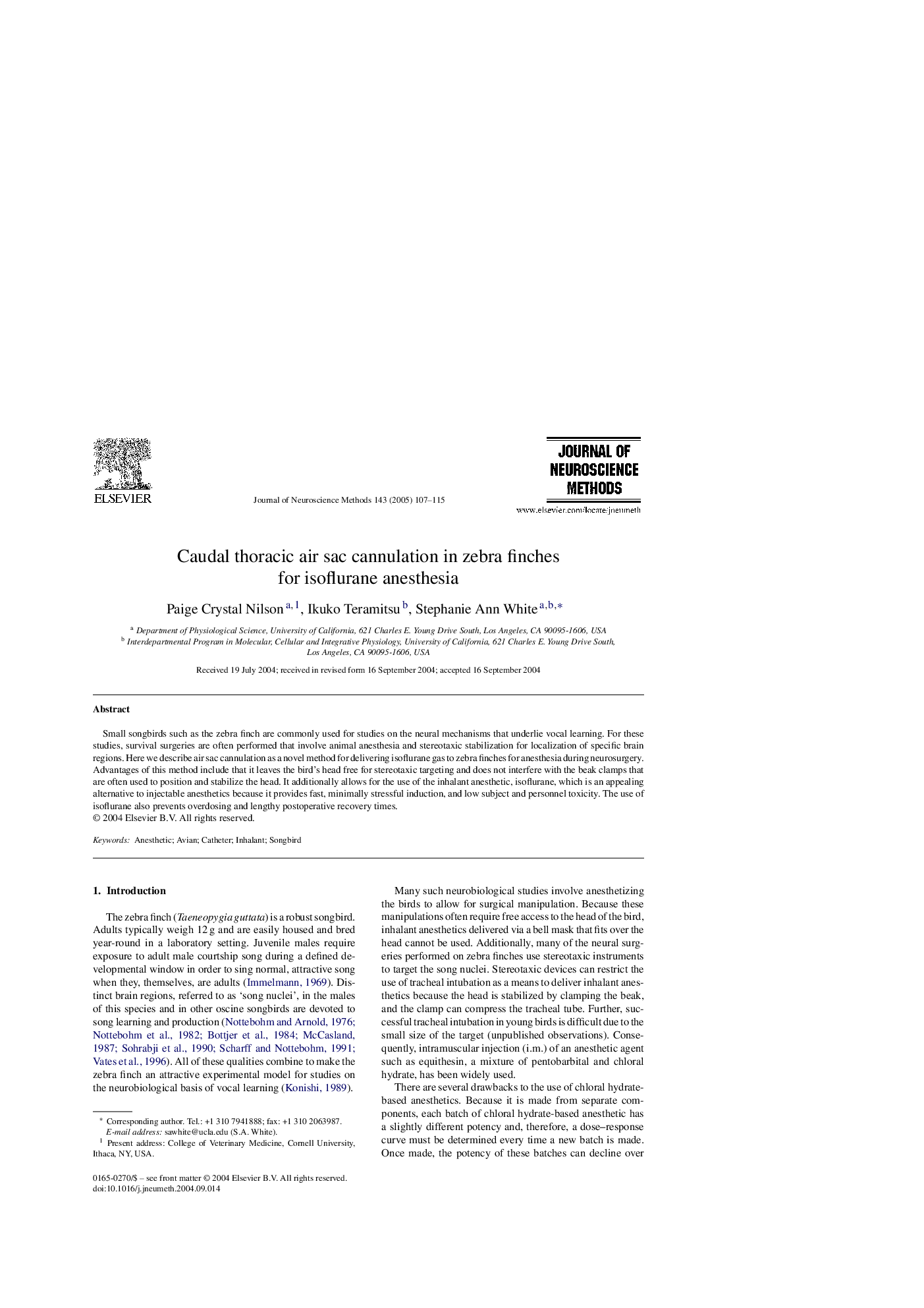| Article ID | Journal | Published Year | Pages | File Type |
|---|---|---|---|---|
| 9424304 | Journal of Neuroscience Methods | 2005 | 9 Pages |
Abstract
Small songbirds such as the zebra finch are commonly used for studies on the neural mechanisms that underlie vocal learning. For these studies, survival surgeries are often performed that involve animal anesthesia and stereotaxic stabilization for localization of specific brain regions. Here we describe air sac cannulation as a novel method for delivering isoflurane gas to zebra finches for anesthesia during neurosurgery. Advantages of this method include that it leaves the bird's head free for stereotaxic targeting and does not interfere with the beak clamps that are often used to position and stabilize the head. It additionally allows for the use of the inhalant anesthetic, isoflurane, which is an appealing alternative to injectable anesthetics because it provides fast, minimally stressful induction, and low subject and personnel toxicity. The use of isoflurane also prevents overdosing and lengthy postoperative recovery times.
Related Topics
Life Sciences
Neuroscience
Neuroscience (General)
Authors
Paige Crystal Nilson, Ikuko Teramitsu, Stephanie Ann White,
